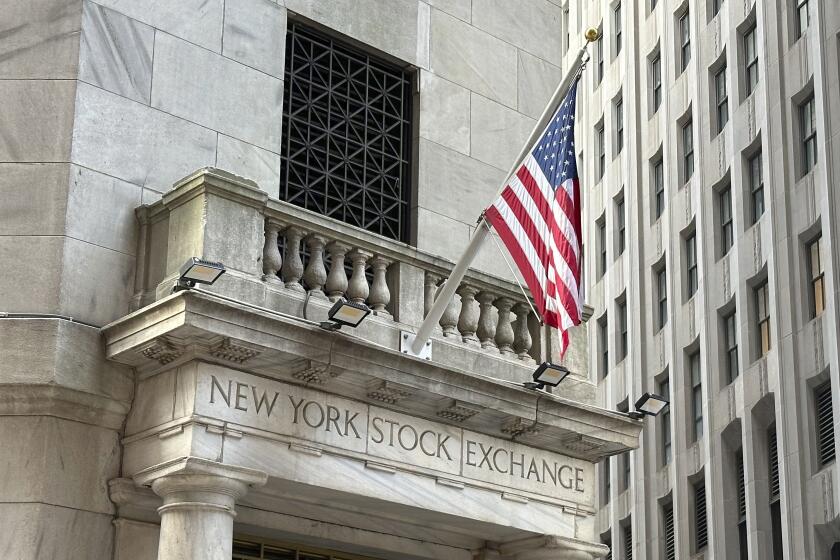Adjustable-Rate Mortgage Mistakes Add Up : Lending: The GAO estimates that up to 25% of ARMs nationwide may be inaccurate.
Warren Bert was worried when he missed several payments on his $250,000 adjustable-rate mortgage. But the Mission Viejo mathematician did some checking and made a startling discovery: The bank had erred in calculating his payments and owed him more than $30,000.
“The loan was pegged to the prime rate . . . but they just raised the rate to 14% in 1989 and left it there,” said Bert, a defense department analyst who has hired a lawyer to resolve the problem.
Although Bert won’t name the bank involved because he’s still negotiating with the institution, his story may not be that unusual. A recent government study claimed that as many as one-fourth of all interest charges on adjustable-rate mortgages are improperly calculated.
The General Accounting Office study estimated that 20% to 25% of the 12 million ARMs nationwide may be inaccurate. That prompted the Comptroller of the Currency to warn banks earlier this year about possible financial liability stemming from ARM errors.
Such mistakes, which a former federal mortgage banking auditor estimated has created at least $10 billion in net overcharges, could be particularly widespread in California, which has the largest number of adjustable-rate mortgages issued in the nation.
“The problem is very widespread,” said M. Scott Barrett, a Bloomington, Ind., attorney, who said class-action lawsuits have been filed against lenders in at least seven states this year on behalf of more than 100,000 borrowers who were allegedly overcharged.
The issue of inaccurate ARMs surfaced about two years ago, when John Geddes, a former auditor with the Federal Savings & Loan Insurance Corp., informed Sen. Richard G. Lugar (D-Ind) about a large number of mistakes in the mortgages taken over by the FSLIC, the now-defunct deposit insurance fund for the nation’s thrifts.
Lugar is still investigating but hasn’t determined the scope of the problem. But a Lugar aide said several federal agencies, including the Office of Thrift Supervision and the Federal Deposit Insurance Corp., have found ARM error rates of 29% to 39% at some thrifts. OTS and FDIC are successor agencies to FSLIC
“Correcting these mistakes will add to the cost of resolving insolvent thrift institutions,” said L. William Seidman, chairman of the FDIC and Resolution Trust Corp., the agency charged with cleaning up the thrift industry, in a letter sent to Lugar in July.
“Adjustable-rate mortgages are extremely complicated,” said Tara Little, a spokeswoman for the American Bankers Assn. “My advice to consumers is to take a close look.”
Experts say most interest rate errors in ARMs are relatively small. But they can add up.
William Yelder, a Pepsico executive who lives in Peeksville, N.Y. said he discovered last year that San Francisco-based First Nationwide Bank was charging him 2 percentage points more than called for under the terms of his $385,000 ARM.
Yelder said his loan servicer used the wrong index to calculate the loan interest rate, chose the wrong date on which to adjust the rate and added a 3% margin onto the index to get the new percentage rate instead of the 0.85% margin stipulated in the mortgage contract.
“If we had not discovered the error, we would have overpaid by $1,000,041 on our mortgage” over the life of the loan, Yelder said. “My advice is very simple: Do not trust the computer.”
First Nationwide said the mistake was inadvertent and refunded Yelder $21,352.
Consumer groups, however, say banks are often reluctant to admit errors and refund money to overcharged borrowers because federal and state lending laws are unclear about the extent of lenders’ liability.
Janice C. Gay, a Sunnyvale resident who works in the aerospace industry, said she has been trying to recover $680 in overpayments on her adjustable-rate loan with First Nationwide for more than four months. She said she found that since 1988 the bank has been choosing the wrong day to adjust her interest rate, which is pegged to the 11th District Cost of Funds index.
“They haven’t said they will not comply; it’s just that they keep delaying and delaying,” Gay said. “I guess I’m not all that surprised. They probably have had a flood of complaints . . . and want to minimize their liability.”
First Nationwide declined to comment on Gay’s loan.
Not all errors favor lenders. In fact, Great Western Bank, which became one of the first institutions in the country to offer ARMs in 1975, last year audited its portfolio of 252,500 loans and found 114 with errors. The loans had total borrower overcharges of about $8,000, compared to undercharges of $20,000, Great Western Bank officials said. Many major lenders say their policy is to reimburse customers for any overcharges and to waive undercharges on adjustable-rate mortgages.
More to Read
Inside the business of entertainment
The Wide Shot brings you news, analysis and insights on everything from streaming wars to production — and what it all means for the future.
You may occasionally receive promotional content from the Los Angeles Times.






